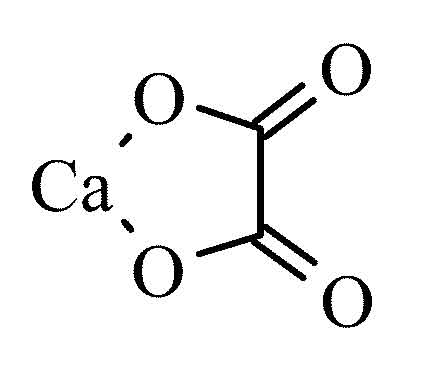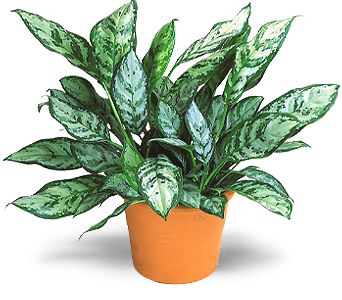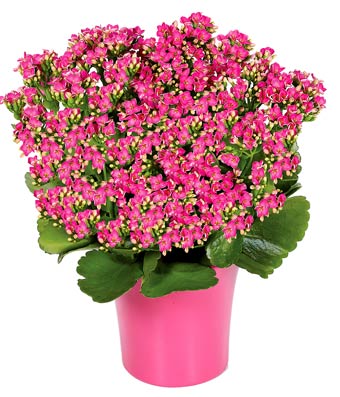Common Houseplants That Are Poisonous For Dogs
Posted by Hot Dog Collars on 03/07/16 11:28 AM

![Tweet:Dangerous for Dogs: Common Houseplants That Are Poisonous For Your Pet [SOURCE=HotDogCollars.com]](http://clicktotweet.com/img/tweet-graphic-4.png) Dangerous for Dogs: Common Houseplants That Are Poisonous For Your Pet
Dangerous for Dogs: Common Houseplants That Are Poisonous For Your Pet
Many people like to have some plants in the house; they look good, and there are proven benefits to health, with many houseplants shown to remove toxins from the air. But if you are a dog owner, you need to be careful, because some of the commonest houseplants are toxic to dogs. If your dog is left alone, particularly if it is likely to chew things, you should make sure that none of these plants are within reach of even the most agile dog, or ideally not in the same room where your pet will stay.
The ASPCA has a complete list of toxic indoor and outdoor plants (aspca.org/pet-care/animal-poison-control/toxic-and-non-toxic-plants) but all the following species are commonly sold in shops and garden centres and also appear regularly on lists of easy-to-grow houseplants.
 Several different species of houseplant contain insoluble crystals of calcium oxalate. This is the same mineral that forms bladder or kidney stones in dogs. If your dog chews the leaves or stems of one of these plants, the tiny sharp crystals will irritate its mouth. Your dog will feel burning in its lips, tongue and throat, and may paw at its mouth or drool excessively. As the throat becomes inflamed, your dog's barking may become weaker or more hoarse, and it may have difficulty swallowing. It may refuse food, or vomit.
Several different species of houseplant contain insoluble crystals of calcium oxalate. This is the same mineral that forms bladder or kidney stones in dogs. If your dog chews the leaves or stems of one of these plants, the tiny sharp crystals will irritate its mouth. Your dog will feel burning in its lips, tongue and throat, and may paw at its mouth or drool excessively. As the throat becomes inflamed, your dog's barking may become weaker or more hoarse, and it may have difficulty swallowing. It may refuse food, or vomit.
Plants that contain calcium oxalate include Pothos (Epipremnum aureum), also known as Devil's Ivy; Peace Lily (Spathiphyllum); Heartleaf or Fiddle-Leaf Philodendron (Philodendron bipennifolium); Chinese Evergreen (Aglaonema modestrum) and Dieffenbachia or Dumb Cane.
 Of these plants, dog owners need to be particularly aware of Chinese Evergreen, which is often grown in pots placed at floor level, and Philodendron and Pothos, both of which are naturally creeping plants with long tendrils. If you own a Chinese Evergreen, have the pot on a shelf or desk that's well out of reach of your dog. If you have a Pothos or Philodendron, make sure that you cut back any long shoots before they begin to dangle down and create a tempting target for your pet.
Of these plants, dog owners need to be particularly aware of Chinese Evergreen, which is often grown in pots placed at floor level, and Philodendron and Pothos, both of which are naturally creeping plants with long tendrils. If you own a Chinese Evergreen, have the pot on a shelf or desk that's well out of reach of your dog. If you have a Pothos or Philodendron, make sure that you cut back any long shoots before they begin to dangle down and create a tempting target for your pet.
Other houseplants can be equally harmful, but for different reasons. English Ivy (Hedera helix) and Snake Plant or Mother-in-Law's Tongue (Sansevieria trifasciata) contain saponins, which cause abdominal pain, vomiting and diarrhoea. Saponins usually have a bitter taste, but the triterpenoid saponins in English Ivy give it a licorice taste. English Ivy is also unusual that the foliage is more toxic than the berries. Snake Plant forms tall, thin, upright columns, and so is often grown in containers at floor level; Ivy is well known for its trailing tendrils. Make sure that both of these plants are kept out of reach.
Kalanchoe, also known as Mother-In-Law-Plant or Mother of Millions, contains a toxin that can affect your dog's heart and nervous system. These type of toxins, bufadienolides, are chemically similar to digoxin, which is used in humans as medication for heart conditions. The most common signs of poisoning with this type of toxin are drooling, vomiting and diarrhoea, but in more severe cases they can include tremor, dilated pupils and irregular heart rhythm.
 Two other plants to avoid having in the room with your dog are the Dragon Tree (Dracaena marginata) and Jade Plant, also called Dwarf Rubber Plant, Chinese Rubber Plant or Japanese Rubber Plant (Crassula argentea), both of which can cause vomiting, but also cause depression and loss of appetite in dogs. Both can be quite large, and tend to be used as feature plants in a room, often in large pots placed on the floor. A bored or stressed dog may chew on plants like this over a period of time before you notice any damage. The thin woody stem of the Dragon Tree is also particularly attractive to dogs that like to play with sticks.
Two other plants to avoid having in the room with your dog are the Dragon Tree (Dracaena marginata) and Jade Plant, also called Dwarf Rubber Plant, Chinese Rubber Plant or Japanese Rubber Plant (Crassula argentea), both of which can cause vomiting, but also cause depression and loss of appetite in dogs. Both can be quite large, and tend to be used as feature plants in a room, often in large pots placed on the floor. A bored or stressed dog may chew on plants like this over a period of time before you notice any damage. The thin woody stem of the Dragon Tree is also particularly attractive to dogs that like to play with sticks.
If you suspect that your dog has eaten leaves or stems of a houseplant, go to the vet immediately. If you know the name of the plant, note it down, or take a picture or even the plant itself with you to the vet. The vet will usually want to know how long ago your dog ingested the plant, and how much has been eaten, so that they can recommend the best treatment.
Being a dog owner doesn't mean that you can't have houseplants, but it makes sense to avoid those that are known to be toxic. There are plenty of plants that are easy to grow and care for in the home that won't harm your dog. Calathea, Spider Plant, Parlour Palm, Aspidistra and Christmas Cactus will all tolerate a certain amount of neglect, and are all non-toxic to dogs. So fill your home with healthy and beautiful plants, but keep your canine best friend healthy and safe too.
Have experience with those house plants attacking your pets? Any tips you would like to share with our readers? Tell us by using the comments below or tweeting at us: @HotDogCollars

